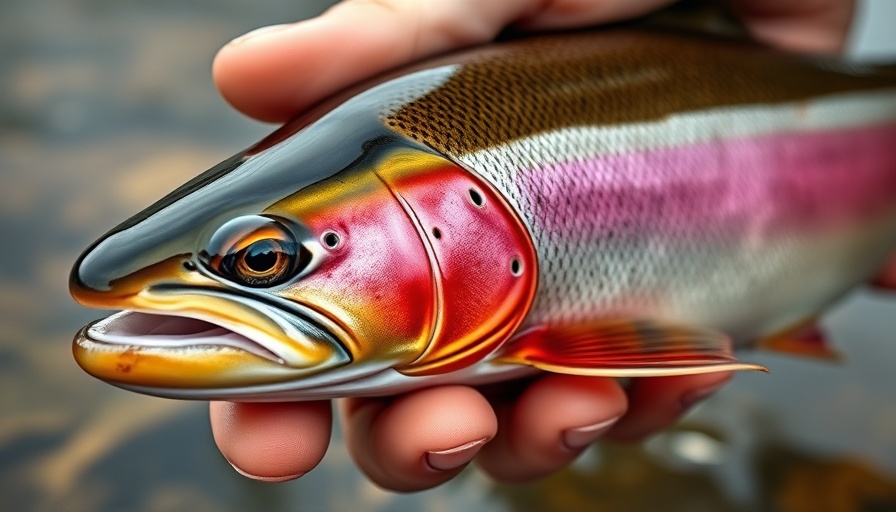
Understanding the Pain of Fish: A New Perspective
A recent study has revealed shocking insights into the pain and suffering experienced by rainbow trout, raising questions about our methods of fish capture and slaughter. As eco-conscious hospitality professionals, understanding these findings is crucial for promoting humane practices in food sourcing and aligning your business with sustainable values.
What the Study Revealed: The Scale of Suffering
According to research published in the journal Scientific Reports, rainbow trout experience significant pain when caught and subjected to air asphyxia. The findings indicate that these fish might suffer from moderate to intense pain for nearly 10 minutes after being removed from water, with some cases extending this suffering up to 21 minutes or more, depending on factors such as size and handling.
Dr. Kevin J. Shadbolt, one of the study authors, explained, "These results are alarming, considering over a trillion fish are slaughtered yearly. As hoteliers and restaurateurs, the choices we make can impact not just our guests but the very ecosystem we cherish."
Implications for Sustainable Hospitality
As boutique hospitality professionals, it’s vital to adopt practices that align with the growing expectations of guests who care about animal welfare. This research's outcomes are not limited to rainbow trout alone; they potentially extend to other species like salmon and tilapia, prompting a call to action for the hospitality industry to rethink seafood sourcing.
By sourcing fish from suppliers who employ humane catching and slaughtering techniques, you can enhance your establishment's sustainability credentials while simultaneously providing a compassionate alternative to your guests.
Moving Towards Humane Practices
The authors of the study advocate for stunning methods that prevent fish from experiencing pain during capture. These techniques, which involve electrical or percussive stunning, could make significant improvements in minimizing suffering—all for a minor cost increase.
For example, if implemented, this investment could save trout from one to 20 hours of pain per dollar spent. As someone involved in boutique hospitality, your engagement with seafood suppliers who prioritize humane practices could become a hallmark of your brand and resonate with environmentally-conscious customers.
Why This Matters: Aligning Business Practices with Conservation
Understanding these research findings allows you to take meaningful steps towards promoting animal welfare while enhancing your establishment's reputation. As our planet grapples with the environmental impact of the food industry, hospitality businesses can shift toward sustainability by ensuring humaneness in their sourcing practices. Even small steps, such as offering only sustainably sourced fish, can make substantial changes in animal welfare standards.
Moreover, these methods can connect with other green initiatives, such as reducing reliance on microplastics in fishing gear and supporting nature reserves that protect aquatic habitats.
A Path Forward: Challenging Conventional Practices
Transparency and education are essential in enhancing guests' awareness about the food they consume. Dive deep into your food sourcing strategies and take an active role in discussing the importance of humane practices in all suppliers. Offer educational tidbits on your menu about the ethics behind food choices and how customers can support sustainable fishing through their selections.
By arming your guests with knowledge and providing them with the option to make informed choices, your hospitality venture can champion more profound climate awareness and environmental responsibility.
Final Thoughts: The Future of Aquatic Welfare in Hospitality
As research like this continues to highlight the impact of our choices on the environment and animal welfare, hospitality professionals must take a leadership role in advocating for sustainable practices. The ripple effect of our decisions extends far beyond the dining table and can inspire systemic change across the industry. While promoting eco-friendly amenities and offering leather alternatives for your guests, do not forget the compassionate choices surrounding the food you serve.
Let’s be proactive in acknowledging the suffering of creatures like rainbow trout and commit to promoting humane practices across the board from sourcing to serving—because the hospitality we provide should also be kind to our world.
 Add Row
Add Row  Add
Add 




Write A Comment